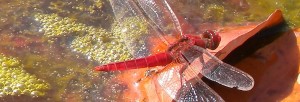FAUNA
For years, the Palmetum has been the best place in the city of Santa Cruz for bird watching. Year after year, the hill has been colonised by a multitude of native bird species who have found it to be an ideal location. Some are quite spectacular and easy to spot, while others are smaller and more timid and require patience and a more expert eye.
Common moorhens (Gallinula chloropus chloropus) often build their nests on the lake of the Madagascar section and are easy to spot. Grey wagtails are also a very common sight, especially near the waterfall in the Caribbean section. In the cooler months, the lakes are visited by egrets and purple herons. Another quite striking and easily identifiable bird is the hoopoe (Upupa epops).
There are several pairs of kestrels (Falco tinnunculus canariensis), which reproduce regularly. Other easy-to-spot birds include canaries, blackbirds, blue tits, swifts, curlews, long-eared owls and many more, including migratory birds that are rather more difficult to see in the Canary Islands.

Another species found in abundance, besides the birds, is Perez’s frog (Pelophylax perezi),found in all areas where there is water.
The presence of lakes, the diversity of habitats and the absence of pesticides have boosted the Palmetum fauna. Man has introduced none of the birds found in the Palmetum, and this is highly significant because it shows that this artificial hill, which until 1996 was a barren rubbish dump, is now supporting birdlife not usually seen in the city. In the coming years the still recent Palmetum will continue to grow and we may well see its already varied fauna increase even further.






